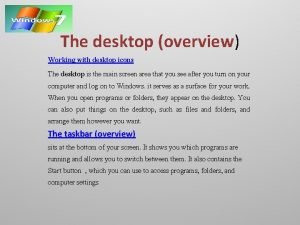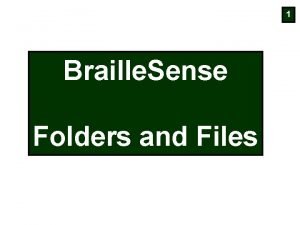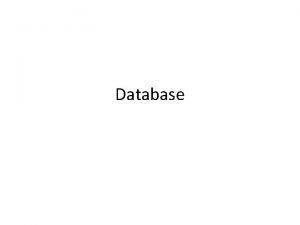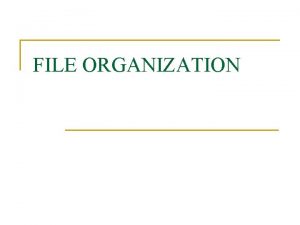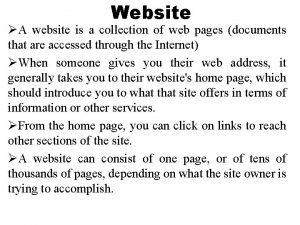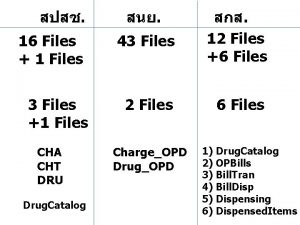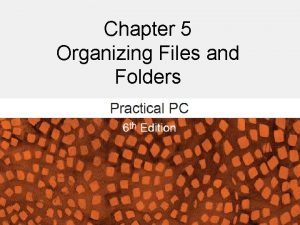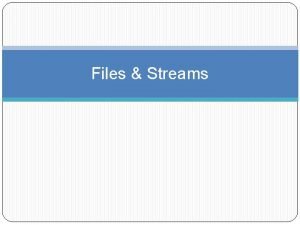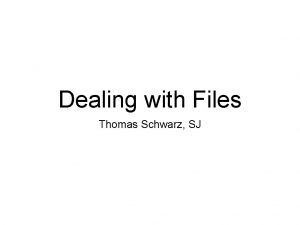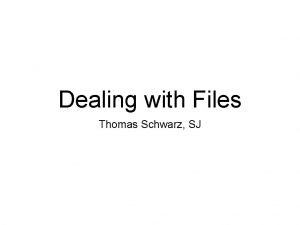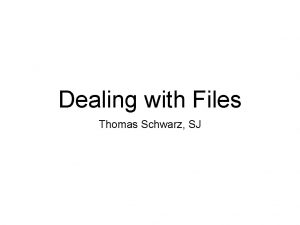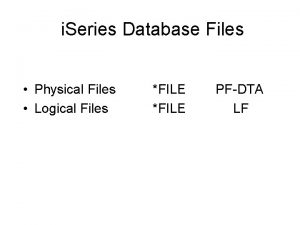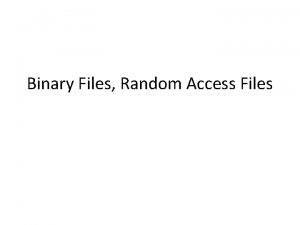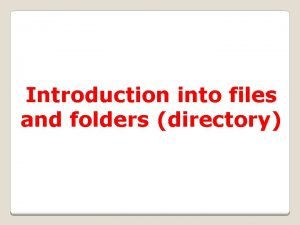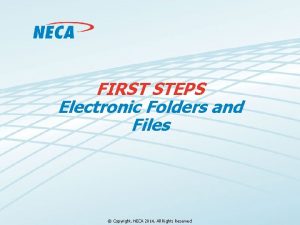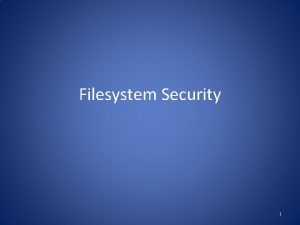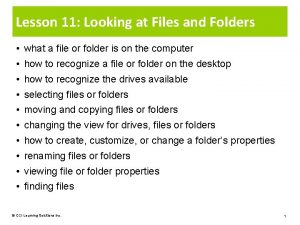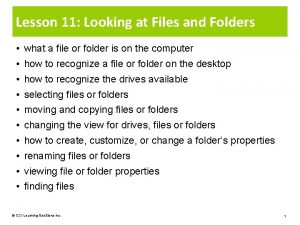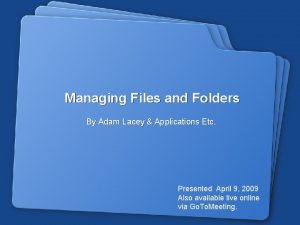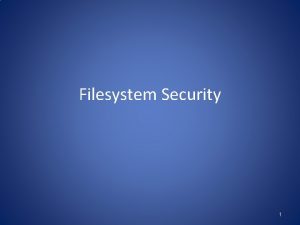Working with files and folders Creating a new























- Slides: 23

Working with files and folders

Creating a new folder • Create a new folder to better organize the information stored on your computer. Creating a folder is like placing a new folder in a filing cabinet.

Steps on creating a new folder • Double click the drive or folder where you want to make a new folder. • Click Make a new folder found at the left side of the window. You can now see a new folder created on the right pane of Windows Explorer. • Type the folder name (e. g. “Exercises”). Press the Enter key on your keyboard.

Moving a file to a folder • Reorganize files stored on your computer by placing them in different locations – Position the mouse over the file you want to move. – Press and hold down the left button as you drag the mouse pointer to where you want to place the file. – Release the button and the file moves to the new location.

Rename a file/folder • Click on a Folder/file, then click Rename this folder/file • Type another name. Press Enter on your keyboard. • Note: You cannot rename a file if the file is currently open.

Deleting a file/folder • To erase or remove the file/folder that you no longer need – Click the file/folder you want to delete – Click Delete this file/folder found at the left side of the window. – A dialog box will appear. Click Yes to delete, No if you change your mind.

Deleting a file/folder

Recycle Bin • By default, all files/shortcuts that we delete from the hard disk are stored in the Recycle Bin. All of these can only be permanently deleted when you empty the Recycle Bin. • Items deleted from a flash disk, or the like, are permanently deleted and are sent to the recycle bin.

Retrieving Deleted Files or Shortcuts • Right click on the Recycle Bin on your desktop, then click Open. Or Double click the Recycle Bin. • Right click on the file or shortcut you want to retrieve, then click Restore.

Emptying Recycle Bin • On the desktop, right click on the Recycle Bin, then click Empty Recycle Bin. • Or, When the recycle bin is open, click Empty the Recycle Bin

Open the Windows Explorer • You can use windows explorer to see all the files in your computer. – Click Start button – Point to Programs, then Accessories. – Click Windows Explorer.

Open the Windows Explorer

Changing the Appearance of Items in a Folder • Click View on the menu bar, then click either Thumbnails, Tiles, Icons, List or Details. • Or • Click the Views button on the toolbar, then click to select any of the options.

Closing Windows Explorer • Click File on the Menu bar, then click Close • Click Close button from the Control buttons.

Backup your files • Backup utility helps you create a copy of information on your hard disk. In the event that the original data on your hard disk is accidentally erased or overwritten, or becomes inaccessible because of a hard disk malfunction, you can use the copy to restore your lost or damaged data.

Backup Your Files • Click Start button, point to All Programs, then Accessories and then System Tools. Select Backup


Backup your files • Click Next Button • Click to select Backup files and settings • Click Next Button • Click to specify the item you want to backup. Example: Let me choose what to back-up • Click Next button.

Backup Your files

Backup your files • Click on the file or folder you want to backup. Click to check the file. • Click Next button

Backup your files • Locate the drive where you want to save your backup. • Type the name for your backup • Click save button

Backup your files • Click Next button. • Click Finish button to close the wizard and start the backup.

Backup your files • Click Close button. You can now see your backup file.
 Common desktop icons
Common desktop icons Ncic restricted files list
Ncic restricted files list Ncic hosts restricted files and non-restricted files
Ncic hosts restricted files and non-restricted files Dot powai files are binary files
Dot powai files are binary files New-old approach to creating new ventures
New-old approach to creating new ventures Hot working and cold working difference
Hot working and cold working difference Cold working
Cold working Machining operations
Machining operations Pengerjaan panas
Pengerjaan panas Smart vs hard working
Smart vs hard working Folders qcom
Folders qcom Braille folder
Braille folder Traditionally, composed of a collection of file folders.
Traditionally, composed of a collection of file folders. Dienst wonen gent
Dienst wonen gent Folders aksioma
Folders aksioma Google backup and sync vs file stream
Google backup and sync vs file stream Creating a new venture team
Creating a new venture team Creating a new nation
Creating a new nation Allows the replication of only immutable
Allows the replication of only immutable Advantages and disadvantages of serial file organization
Advantages and disadvantages of serial file organization Visual basic and database files
Visual basic and database files Tomer owns a daycare
Tomer owns a daycare Web page is a collection of websites
Web page is a collection of websites Azure file sync deduplication
Azure file sync deduplication
